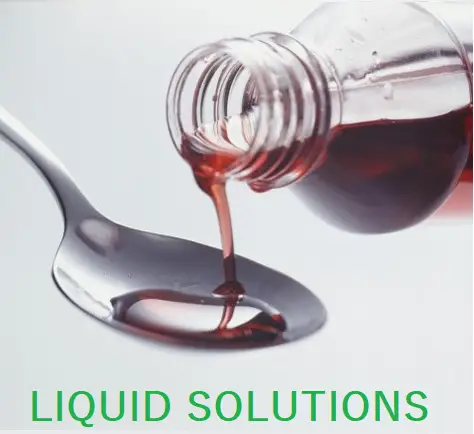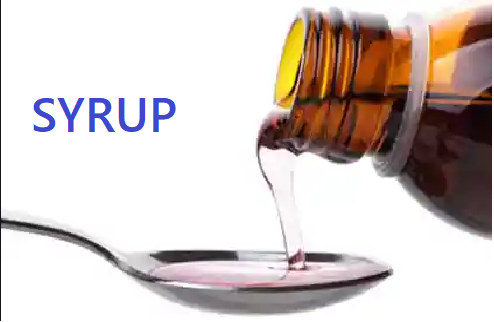DICLOFENAC SODIUM GEL
Diclofenac sodium topical gel is a medication that treats arthritis of the knee. It’s a type of NSAID that decreases inflammation. You can apply this gel to your skin as directed on the affected area of your body.
Diclofenac is a medicine that reduces swelling (inflammation) and pain.
It’s used to treat aches and pains, as well as problems with joints, muscles, and bones. These include:
- rheumatoid arthritis and osteoarthritis
- sprains and strains in muscles and ligaments
- back pain
- toothache
- migraine
- gout
- ankylosing spondylitis – this causes inflammation of the spine and other parts of the body
Diclofenac comes as tablets and capsules, including slow-release tablets and capsules, and suppositories. These are available on prescription only.
Diclofenac gel and plasters for joint pain are available to buy from pharmacies.
Diclofenac gel
Dosage
You’ll usually use the gel 2 to 4 times a day, depending on how strong it is. Check the packaging for more information or speak to your pharmacist.
If you’re using the gel twice a day, use it once in the morning and once in the evening. If you’re using it 3 or 4 times a day, wait at least 4 hours before putting on any more.
The amount of gel you need depends on the size of the area you want to treat. You’ll usually use an amount about the size of a 1 penny or 2 pence piece (2 to 4 grams).
What is this medication?
DICLOFENAC (dye KLOE fen ak) treats arthritis of the knee. It works by decreasing inflammation. It belongs to a group of medications called NSAIDs.
PURPOSE: This Master formula is written to describe the formulae, manufacturing procedure,
specifications, and packing details of the dosage form.
SCOPE: This MFR is performed and applied during the manufacturing of dosage form.
RESPONSIBILITY / ACCOUNTABILITY: It is the responsibility of the Manufacturing Chemist to
follow and adhere to this SOP. The Production Pharmacist, QC/QA Manager are accountable
for the strict adherence to the master formula.
COPY ISSUED TO:
1. Master Copy: Manager Quality Assurance
2. Copy No. 1: Production Pharmacist
3. Copy No. 2: Manager Quality Control
4. Copy No. 3: Ointment Section
| PRODUCT NAME: DICLOFENAC SODIUM GEL | BATCH SIZE: 700 KG |
| PRODUCT REFERENCE CODE: | UNIT SIZE: 25 g |
| GENERIC NAME: N.A. | PACK SIZE: 30 ´ 12 ´ 25g |
| DOSAGE FORM: OINTMENT | STRENGTH: N.A. |
| DEPARTMENT: OINTMENT DEPARTMENT | EXPIRY DATE: AFTER 24 MONTHS FROM THE DATE OF MANUFACTURING |
COMPOSITION:
| Diclofenac Diethyl ammonium | 1.16% w/w | |
| equivalent to Diclofenac Sodium | 1.0% w/w | |
| Methyl Salicylate | I. P. | 10.00% w/w |
| Menthol | I. P. | 0.01% w/w |
SPECIMEN OF UNIT CARTON:
EQUIPMENTS TO BE USED:
| SR. NO. | NAME OF EQUIPMENT | ASSEMBLING AS PER SOP NO. | CLEANING AS PER SOP NO. |
| 1 | Wax Vessel | ||
| 2 | Water Vessel | ||
| 3 | Mixing Vessel | ||
| 4 | Planetary Mixer – 150 Kg | ||
| 5 | Storage Container-I (1000 Kg) | ||
| 6 | Semiautomatic Aluminium Tube Filling & Crimping Machine |
| S.NO. | INGREDIENTS | STD | Theoretical Quantity Req. | Overages % | Total Quantity Used |
| 1 | CM – 1000 | I.P. | 15.400 | 15.400 KG | |
| 2 | CARBOPOL – 934 | I.P. | 12.770 | 12.770 KG | |
| 3 | DICLOFENAC DIETHYL AMMONIUM HYDRATE | I.P. | 8.120 | 5.00 | 8.526 KG |
| 4 | EDTA | I.P. | 0.700 | 0.700 KG | |
| 5 | ISO PROPYL ALCOHOL | I.P. | 70.000 | 70.000 KG | |
| 6 | LIQUID PARAFFIN LIGHT | I.P. | 12.600 | 12.600 KG | |
| 7 | METHYL PARABEN SODIUM | I.P. | 0.700 | 0.700 KG | |
| 8 | MENTHOL | I.P. | 35.000 | 5.00 | 36.750 KG |
| 9 | METHYL SLICYLATE | I.P. | 70.000 | 10.00 | 77.000 KG |
| 10 | PROPYL PARABEN SODIUM | I.P. | 1.750 | 1.750 KG | |
| 11 | P.G | I.P. | 35.000 | 35.000 KG | |
| 12 | SODIUM METABI SULPHITE | I.P. | 1.400 | 1.400 KG | |
| 13 | STEARIC ACID | I.P. | 7.000 | 7.000 KG |
PACKING MATERIALS:-
| S.NO. | NAME OF THE MATERIAL | THEORETICAL QUANTITY REQ. | FOR RECORD | TOTAL QUANTITY USED |
| 1 | ADHESIVE TAPE ROLL BROWN | 2.000 | 2.000 NOS | |
| 2 | CELLO TAPE | 3.000 | 3.000 NOS | |
| 3 | CORRUGATED BOX | 78.000 | 78.000 NOS | |
| 4 | TUBES | 28000.000 | 28000.000 NOS | |
| 5 | UNIT CARTON | 28000.000 | 3.000 | 28003.000 NOS |
| 6 | OUTER CARTON | 2333.000 | 2.000 | 2335.000 NOS |
MANUFACTURING SPECIFICATION:
Average fill of each Tube is 25 grams.
Wight variation limit allowed in each filled Tube is + 200 mgs.
Weight Variation Limit for nominal weight of 8 filled Tubes is + 5 %.
Melt the waxes at the maintained temperature 700 C.
Use accurate weight quantity of water to make up the final weight of cream.
Keep ¼ valve of Colloid mill opened till uniform particle size is achieved.
Mix the batch, Fill the Tubes and also perform the primary packing of Tubes at temperature
not more than 250 C and Relative Humidity not more than 40.
Prepare the batch in 2 lots of same size i.e. 2 ´ 350 kgs.
Prepare second lot only after the completion of first batch.
Prepare the second lot in the same manner repeating the procedure of lot one and send
the sample for bulk testing.
Yield:
Theoretical Yield is 28000 Tubes.
Expected Practical Yield is 28000 +2% Tube.
Packing Details:
Transfer the cream from storage tank to Semiautomatic Aluminium Tube Filling &
Crimping Machine and start filling and then Crimping of the tubes as per its SOP.
Pack the filled tubes in unit carton.
Pack such 12 tubes in each outer carton.
Seal the outer carton with cello tape.
Pack the 30 outer cartons in specified corrugated box to give a pack size of 30 x 12 x 25 Tubes.
Seal the each corrugated box with adhesive tape and label it properly by affixing the specified label
MANUFACTURING PROCESS (For 350 kg):
PREPARATION OF GEL:
Add 211 kg of water to the Water Vessel. Operate the machine as per its SOP.
Under constant stirring add 0.350 kg of Methyl Paraben Sodium, 0.875 kg of Propyl
Paraben Sodium, 0.350 kg of E.D.T.A., 0.700 kg of Sodium Metabisulphite and 6.385 kg
of Carbopol- 934 to the same vessel and allow the stirring to achieve uniform smooth gel.
Heat 7.700 kg of Ceto Macrogol – 1000, 6.300 kg of Liquid Paraffin Light and 3.500 kg of Stearic
Acid in Steam Heat Wax Melting Vessel by operating it as per its SOP at temperature 600 C.
Filter the melted base in step no. 2 through Stainless Steel Sieve no. 100 and transfer to the
mixing vessel. Start the machine as per its SOP.
Dissolve 4.263 kg of Diclofenac Diethyl Ammonium in 35.00kg of Isopropyl Alcohol and filter it
and transfer to the bulk batch.
Transfer 17.500 kg of Propylene Glycol to the bulk batch and mix thoroughly for 15 minutes.
Take 38.500 kg of Methyl Salicylate in another Planetary Mixer and add 18.375 kg of Menthol
to it. Operate this Planetary Mixer as per its SOP and mix till the menthol dissolves completely.
Transfer the dissolved solution of Menthol and Methyl Salicylate to the bulk batch.
Mix the whole batch for 60 minutes till uniform cream is achieved.
Send the sample to Quality Control Department for bulk testing.
After approval from Quality Control Department, transfer the cream to the storage tank.
IN-PROCESS CONTROLS:
The following in-process controls should be maintained during the processing:
Check Raw materials used for manufacturing purpose are all approved materials and have
‘Released’ labels fixed on it.
All weighed Raw materials should be counter-checked by Assistant Manufacturing Chemist.
If any discrepancy is noticed, it should be immediately brought to the notice of Production
Pharmacist and QC/QA Manager.
Physical characteristics of Raw material like colour, odour, and consistency are checked
before compounding.
The total weight of bulk ointment / cream should be checked in the presence of
Assistant Manufacturing Chemist and record the same in Batch Manufacturing Record.
pH of the bulk should be checked and it should be with in specified limits.
Bulk sample should be sent for analysis to Quality Control Department before starting
the filling and sealing stage.
While the tube filling operation is on, the Assistant Manufacturing Chemist should check
weight of net filled quantity per tube at the interval of 30 minutes by checking the tare
weight of empty tube and gross weight of the filled tube. Record for the same should
be kept in Batch Manufacturing Record.
The ‘fill weight’ of ointment or cream per tube should not be less than the labelled amount.
Limit for Weight Variation: Weight claimed on the carton + 200 mg
Manufacturing Chemist will also ensure that the crimping of the filled Aluminium tubes,
sealing of plastic tubes is appropriate and embossing of batch number and manufacturing
date is conspicuous. Also the quality of embossing will be controlled by adjusting pressure
exerted by the jaws, so that pinholes are not developed on the embossed letters/numbers.
The inner and outer cartons should be checked thoroughly for proper batch coding.
Manufacturing Chemist and Production Pharmacist should randomly check that the correct no.
of inner cartons are being packed in each outer cartons and also the correct number of outer
cartons in each shipper is exactly the same as that shown in proof.
Intimation should be sent to Quality Control Department for finished product sampling and testing.
After the completion of filling and packaging, the coded cartons should be accounted for and
rejected printed material should be destroyed in the presence of QC/QA Manager. Maintain
the destruction of the same in the Batch Manufacturing Record.
It will be ensure that filling or packaging equipment has been properly cleaned.
Filling or packaging of next product should be commenced only after getting the
‘Line Clearance’ of the previous product, from the IPQA.





